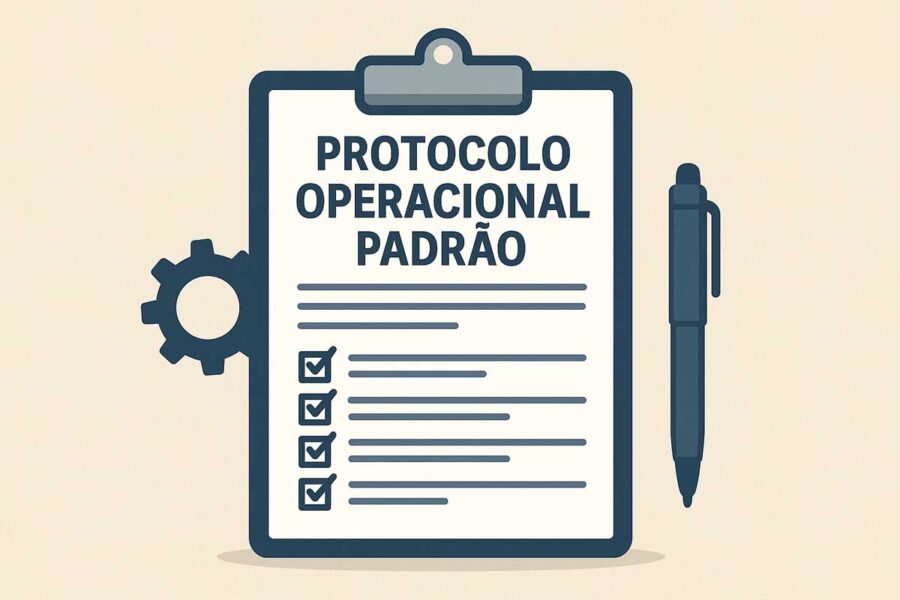Protocolo Operacional Padrao: Essential Guide to Implementing Standard Operating Procedures for Organizational Excellence

Understanding Protocolo Operacional Padrao in Modern Business
Every successful organization faces the same fundamental challenge: how to maintain consistent quality while scaling operations. The answer often lies in something that sounds deceptively simple yet proves remarkably powerful in practice.
A protocolo operacional padrao serves as more than just a set of instructions. It’s essentially a roadmap that guides employees through complex tasks with precision and confidence. Think of it as the difference between following a recipe and improvising in the kitchen.
What sets these procedures apart from typical business processes is their level of detail and specificity. While general processes might outline broad steps, a well-crafted protocolo operacional padrao leaves nothing to chance or interpretation.
Companies across the globe have discovered that these standardized protocols act like invisible threads holding their operations together. From small startups to multinational corporations, the principles remain surprisingly consistent.
The beauty of protocolo operacional padrao lies in its universal applicability. Whether you’re running a corner bakery or managing a pharmaceutical laboratory, the core concepts translate seamlessly across industries and cultures.
Core Benefits of Implementing Standard Operating Procedures
The transformation that occurs when organizations embrace protocolo operacional padrao often surprises even seasoned executives. Results become predictable in ways that seemed impossible before implementation.
Consider the typical onboarding experience for new employees. Without clear procedures, training becomes a game of telephone, with each trainer adding their own interpretation. Protocolo operacional padrao eliminates this variability entirely.
Risk management takes on new meaning when every potential hazard has been identified and addressed systematically. Insurance companies have noticed this trend, often offering reduced premiums to organizations with comprehensive procedural documentation.
The accountability factor cannot be overstated. When expectations are crystal clear, performance evaluations become objective rather than subjective. Employees appreciate this transparency as much as managers do.
Perhaps most compelling is the financial impact. Companies typically see measurable cost reductions within the first quarter of implementation. These savings compound over time as efficiency gains accumulate.
Essential Components of Effective Protocolo Operacional Padrao
Creating effective protocolo operacional padrao requires more art than science. The best procedures read like well-written instructions that anyone can follow, regardless of their experience level.
Clarity starts with the opening statement. Every procedure should begin by explaining exactly what will be accomplished and why it matters. This context helps employees understand their role in the bigger picture.
The step-by-step section forms the heart of any protocolo operacional padrao. Each action should be described using active voice and specific language. Vague terms like “ensure” or “verify” should be replaced with concrete actions.
Responsibility assignments prevent the all-too-common scenario where important tasks fall through the cracks. When everyone knows their specific role, coordination becomes effortless rather than chaotic.
Resource requirements deserve special attention because nothing derails a procedure faster than missing tools or materials. Smart organizations include backup options for critical resources.
Safety considerations must be woven throughout rather than relegated to a separate section. This integration helps employees develop safety-conscious habits naturally.
Industry Applications and Real-World Examples
Healthcare environments showcase protocolo operacional padrao at its most critical. When a patient arrives in the emergency room, every second counts. Standardized triage procedures ensure that life-threatening conditions receive immediate attention.
Manufacturing floors tell a different but equally compelling story. Automotive assembly lines depend on protocolo operacional padrao to maintain the precise tolerances required for vehicle safety. A single deviation can trigger costly recalls.
Restaurant kitchens might seem chaotic to outsiders, but successful establishments run on carefully choreographed procedures. Food safety protocols protect customers while ensuring consistent taste and presentation.
Airlines operate in an environment where protocolo operacional padrao literally means the difference between life and death. Pilot checklists, maintenance schedules, and emergency procedures all follow standardized formats developed over decades.
Government agencies face unique challenges in serving diverse populations fairly and efficiently. Standardized procedures help ensure that citizens receive equal treatment regardless of which office they visit or which employee assists them.
Step-by-Step Implementation Strategy
Rolling out protocolo operacional padrao across an organization requires careful planning and realistic expectations. The most successful implementations start small and build momentum gradually.
Begin by identifying processes that cause the most frustration or consume the most resources. These high-impact areas provide the best return on initial investment and help build support for broader implementation.
Employee involvement from day one makes the difference between acceptance and resistance. The people who perform tasks daily often have insights that management overlooks. Their input improves both procedure quality and buy-in.
Testing procedures before full deployment prevents embarrassing mistakes and builds confidence. Pilot programs allow for refinement without disrupting entire operations.
Training programs should focus on understanding rather than memorization. When employees grasp the reasoning behind procedures, they’re more likely to follow them consistently and suggest improvements.
Feedback loops ensure that procedures evolve with changing conditions. The best protocolo operacional padrao documents are living documents that improve continuously.
Overcoming Common Implementation Challenges
Resistance to change represents the biggest obstacle most organizations face when implementing protocolo operacional padrao. Employees often worry that procedures will make their work more rigid or bureaucratic.
The key to overcoming resistance lies in demonstrating immediate benefits. When people see how procedures make their jobs easier rather than harder, attitudes shift quickly.
Complexity creep threatens many well-intentioned procedure development efforts. The temptation to cover every possible scenario can result in documents that nobody wants to read or follow.
Ownership issues arise when procedures become orphaned after initial implementation. Assigning specific individuals to maintain and update each procedure prevents this common problem.
Technology can either help or hinder implementation efforts. The best systems integrate seamlessly with existing workflows rather than requiring major operational changes.
Measuring Success and Continuous Improvement
Measuring the effectiveness of protocolo operacional padrao requires both quantitative and qualitative metrics. Numbers tell part of the story, but employee feedback provides equally valuable insights.
Error rates typically drop significantly after procedure implementation, but the timeline varies by industry and complexity. Manufacturing environments often see immediate improvements, while service industries may require longer adjustment periods.
Training time reductions provide another clear indicator of success. When new employees can become productive faster, the return on investment becomes obvious to even the most skeptical managers.
Customer satisfaction scores often improve as service delivery becomes more consistent. This external validation helps justify continued investment in procedure development and maintenance.
Regular audits reveal gaps between documented procedures and actual practices. These discoveries provide opportunities for improvement rather than reasons for criticism.
Future of Protocolo Operacional Padrao in Digital Age
Technology is transforming how organizations create, distribute, and maintain protocolo operacional padrao. Mobile devices now provide instant access to procedures anywhere in the workplace.
Artificial intelligence shows promise for identifying procedure improvement opportunities by analyzing performance data patterns. However, human judgment remains essential for interpreting these insights and implementing changes.
Virtual reality training programs allow employees to practice complex procedures in safe environments. This technology proves particularly valuable for high-risk or infrequently performed tasks.
Cloud-based platforms enable real-time collaboration on procedure development and updates. Teams can work together regardless of geographic location, accelerating improvement cycles.
The future belongs to organizations that can balance standardization with flexibility. The most successful protocolo operacional padrao implementations will adapt to changing conditions while maintaining their core benefits of consistency and reliability.


